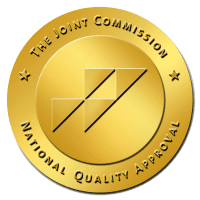According to a recent report by the National Institutes of Health, more than 29 million Americans ages 12 and older have some form of alcohol use disorder. This has serious health, professional, and personal implications for those individuals and their families.
Many people with different levels of alcohol abuse may wonder, “Am I an alcoholic?” This is a difficult question to answer. More importantly, it revolves around a more complex and in-depth look at how alcohol use is affecting your life.
This article explores those questions and offers some answers that will help you assess your circumstances. Keep reading to find out what signs to look for and what solutions are available to help you overcome addiction, so you can lead a healthy, happy life.
Am I An Alcoholic?
“Alcoholism” is the term that has been used for decades to describe alcohol abuse. The problem is “alcoholism” is simultaneously too general and too specific, depending on the circumstances.
On the one hand, it can fail to describe the specific types of problems involving alcohol. More importantly, it does not acknowledge all the underlying causes of alcohol abuse.
On the other hand, it can be used to set too high a bar for what is considered an “alcoholic.” It can potentially exclude someone who does not have severe alcohol reliance but still exhibits problematic drinking behavior on a regular basis.
The terminology has generally been replaced by “alcohol use disorder” (AUD). This is a medical condition characterized by the inability to stop or control alcohol use. This happens despite adverse social, occupational, or health consequences.
Said another way, AUD encompasses all the conditions many people refer to as “alcoholism,” as well as “alcohol dependence,” “alcohol addiction,” or “alcohol abuse.” It also is an umbrella term for looking at all the different aspects of addiction.
Factors Contributing to AUD
There are several elements that can contribute to the development of AUD. Genetics is a major one. In fact, hereditability accounts for between 40 and 60 percent of all cases of AUD.
However, genetics is influenced by other factors. For instance, a child whose parents exhibit patterns of alcohol abuse may be more likely to develop AUD later in life.
Drinking at an early age is another major factor. Statistics show individuals who start drinking before the age of 15 are more than three times more likely to develop AUD than those who wait until they are 21.
Finally, mental health conditions and a history of trauma can make AUD more likely. For instance, anxiety, depression, attention deficit hyperactivity disorder, and post-traumatic stress disorder (PTSD), make AUD more likely.
Heavy Drinking vs Binge Drinking
In general, there are two main types of excessive drinking: “heavy drinking” and “binge drinking.” Heavy drinking relates to how many drinks a person has throughout the week. “Binge drinking” means consuming an excess of alcohol in a single setting.
According to the Centers for Disease Control and Prevention, “heavy drinking” is having eight or more drinks per week for women, and 15 or more drinks per week for men. “Binge drinking” is defined as having more than four drinks in a day. “Moderate drinking” is having one drink per day for women, and two drinks or less per day for men.
Keep in mind someone with AUD can exhibit “heavy drinking” or “binge drinking” without the presence of the other behavior. In more serious cases, signs of both are common.
What Are the Signs of Alcohol Abuse Disorder?
When trying to determine, “Am I an alcoholic?,” it can be helpful to look at several common signs that are present with AUD. Here are some of the main ones medical professionals use to identify and diagnose AUD:
- You have had times when you drank more or longer than you intended.
- You have spent a lot of time drinking or recovering from the effects of drinking.
- You have attempted to stop or cut down on drinking but have been unable to.
- You find you have to drink more to achieve the desired physiological effects.
- You have noticed that drinking or the aftereffects of drinking have interfered with your personal or professional obligations.
- You continue to drink despite the problems it has caused with family, friends, or coworkers.
- You find yourself prioritizing drinking over activities that are important to you.
- You have participated in activities while drinking that have increased your chances of hurting yourself or others. (These include operating a vehicle, using heavy machinery, and unsafe sexual behavior, among others.)
- You have experienced withdrawal symptoms once the effects of alcohol wear off.
Any of these behaviors or experiences are cause for concern. The good news is once you identify them, you can confront and address them accordingly.
What Is Alcohol Withdrawal?
Alcohol is both psychologically and physically addictive. It activates the pleasure or “reward” centers in the brain, triggering the release of neurotransmitters, such as dopamine and serotonin. From a psychological standpoint, the person wants to recreate these good feelings.
With habitual use, the brain begins to rely on alcohol to achieve these physiological functions. This can cause physical addiction because it also becomes more difficult to achieve these effects from everyday activities. The body then reacts negatively to the absence of alcohol, which leads to withdrawal.
In most cases, this results in irritability and anxiety. It can trigger mood swings, nightmares, insomnia, and sweating. In many cases, the individual may experience elevated heart rate and high blood pressure.
In moderate and severe cases, someone going through alcohol withdrawal will have shaking or tremors. In more extreme instances, the person can have delirium tremens. This is a combination of the above symptoms can lead to serious disorientation and even hallucinations.
Alcohol Addiction Treatment
Fortunately, there are many effective treatments for AUD. If you’re concerned you exhibit some of the behaviors or signs described above, the best thing you can do is seek professional help. What this looks like depends on the severity of addiction, but most rehabilitation programs have a multifaceted approach.
Detox
Most rehabilitation programs begin with a period of detoxification. This allows the body to begin the process of functioning without the presence of alcohol.
This can be a difficult time since the individual is likely to experience cravings and other withdrawal symptoms. Fortunately, recovery programs offer a variety of tools, including therapy and medications, to help deal with the effects of abstaining from alcohol.
Medical Treatment
Some medications can help people stop or reduce drinking. Most are non-habit-forming, so there is little drawback to using them to curb alcohol abuse.
They include drugs like naltrexone that block the effects of alcohol on the body so people are not motivated to use it. Other medications, like disulfiram, block the breakdown of alcohol in the body. This produces unpleasant results, such as nausea, that dissuade people from drinking.
Therapy
Most rehabilitation programs offer some level of counseling by licensed therapists. This can take many forms but often includes cognitive-behavioral therapy. This is meant to address the underlying causes of addiction, such as depression or PTSD.
Rehabilitation can include family or group therapy as well. These can help impart skills for a recovering addict and their loved ones, as well as create a network of support. Group meetings are useful for connecting with other people who have faced similar struggles with alcohol addiction.
Options for Accessing Rehabilitation Services
There also are many different avenues for getting help. Which one is right for you depends on the level of addiction and how long it has persisted, as well as other personal preferences and constraints.
Most rehab facilities offer both in- and out-patient options. In-patient rehab often combines psychiatric and medical treatment at live-in facilities.
In-patient rehab often provides the best chance of success. That is because it gives you tools for combatting withdrawal symptoms along with therapy to deal with the psychological aspects of addiction.
Out-patient recovery can take many forms. It usually involves meeting with therapists or medical staff at least three or four days a week.
This allows you to keep working and tend to personal aspects of your life. The flip side is that it also entails more opportunity for the individual to relapse.
Online rehabilitation services continue to grow in popularity. They can be a helpful alternative to other types of rehab. They also can be an effective tool for someone transitioning from more intensive recovery services back into their daily lives.
Find Addiction Treatment Near You
Now that you have some answers to the question “Am I an alcoholic?” you can have a better idea of the steps you need to take to begin recovery. Being honest with yourself about alcohol abuse is the most important thing you can do. Seeking help is the next step.
At Purpose Healing Center, we have programs at both our Scottsdale and Phoenix campuses. Our goal is to provide comprehensive yet customized addiction support plans for each person. Reach out to us today to learn more about treatment programs for you or someone you know who is addicted to alcohol.



